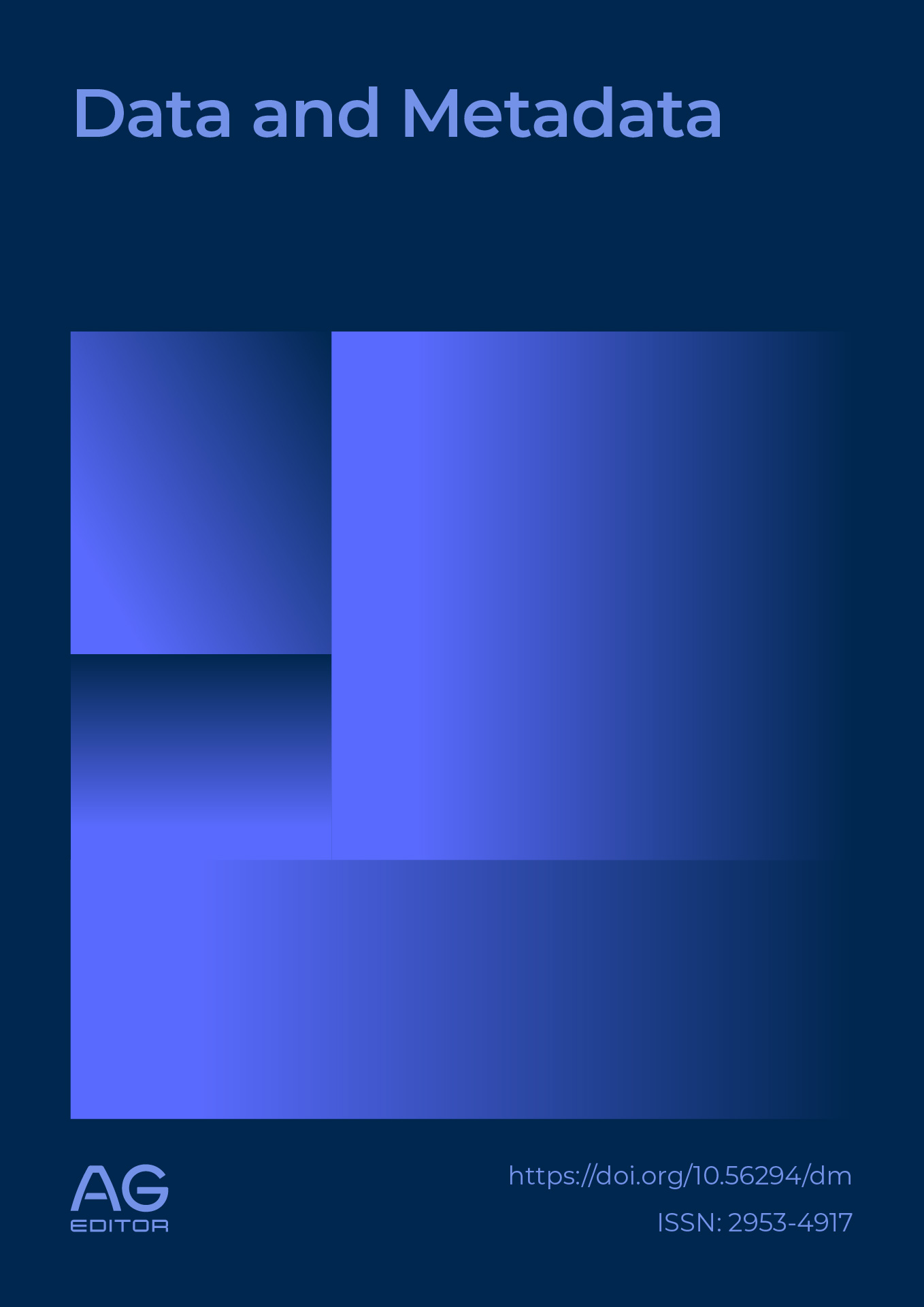Transforming Vocational Education through Augmented Reality: A Systematic Review of Current Trends, Challenges, and Future Opportunities
DOI:
https://doi.org/10.56294/dm2025578Keywords:
Augmented Reality, Vocational Education, Vocational Training, PRISMA, Educational TechnologyAbstract
In recent years, the potential of Augmented Reality (AR) to revolutionize vocational education has garnered significant attention, offering innovative solutions to bridge the gap between theoretical knowledge and practical skills. This systematic literature review aims to explore the latest trends, challenges, and opportunities related to the implementation of AR in vocational training over the past decade. The data utilized in this study were sourced from articles published between 2014 and 2024, extracted from the Scopus and Web of Science (WoS) databases to ensure comprehensive and high-quality coverage. The PRISMA method was applied to guarantee a transparent and reproducible process, consisting of several stages: identifying relevant studies, filtering based on predefined inclusion and exclusion criteria, assessing study quality, and extracting data. Following the PRISMA protocol, 67 research papers were initially identified, and after multiple stages of refinement, 24 papers were selected for detailed analysis. The findings indicate that Augmented Reality (AR) can enhance engagement and learning effectiveness in vocational education. However, its implementation is still hindered by limitations in infrastructure and the need for improved teacher training. To fully harness the potential of AR, further research is essential to develop more inclusive pedagogical models and support the integration of AR into vocational education curricula
References
1. Gupta DrSK, M H. Lack of it Infrastructure for ICT Based Education as an Emerging Issue in Online Education. Technoarete Transactions on Application of Information and Communication Technology(ICT) in Education. 2022;1(3).
2. Tashtoush MA, AlAli R, Wardat Y, Alshraifin N, Toubat H. The Impact of Information and Communication Technologies (ICT)-Based Education on the Mathematics Academic Enthusiasm. Journal of Educational and Social Research. 2023;13(3).
3. Sidiq H, Muskhir M. Analisis Uji Kelayakan Penerapan Media Pembelajaran Instalasi Motor Listrik Berbasis Augmented Reality. Jurnal Pendidikan Teknik Elektro. 2020;1(1).
4. Churiyaha M, Sholikhan S, Filianti F. Mobile learning uses in vocational high school: A bibliometric analysis. World Journal on Educational Technology: Current Issues. 2022;14(2).
5. Monjelat N, Lantz-Andersson A. Teachers’ narrative of learning to program in a professional development effort and the relation to the rhetoric of computational thinking. Educ Inf Technol (Dordr). 2020;25(3).
6. McGrath S, Yamada S. Skills for development and vocational education and training: Current and emergent trends. Int J Educ Dev. 2023;102.
7. Siriwardhana S, Moehler RC. Enabling productivity goals through construction 4.0 skills: Theories, debates, definitions. J Clean Prod. 2023;425.
8. Steinhaeusser SC, Eckstein B, Lugrin B. A multi-method approach to compare presence, fear induction and desensitization in survival horror games within the reality-virtuality-continuum. Entertain Comput. 2023;45.
9. Chen W, Wu J, Li L, Wu S. Relationship between Interaction Anxiousness, Academic Resilience, Cultural Intelligence and Ego-Identity among Chinese Vocational Pathway University Students: A Conditional Process Analysis Model. International Journal of Mental Health Promotion. 2023;25(8).
10. Liu Y, Zhan Q, Zhao W. A systematic review of VR/AR applications in vocational education: models, affects, and performances. Interactive Learning Environments. 2023.
11. Begout P, Kubicki S, Bricard E, Duval T. Augmented Reality Authoring of Digital Twins: Design, Implementation and Evaluation in an Industry 4.0 Context. Front Virtual Real. 2022;3.
12. Yang S. Storytelling and user experience in the cultural metaverse. Heliyon. 2023;9(4).
13. Runge I, Lazarides R, Rubach C, Richter D, Scheiter K. Teacher-reported instructional quality in the context of technology-enhanced teaching: The role of teachers’ digital competence-related beliefs in empowering learners. Comput Educ. 2023;198.
14. Bardoe D, Hayford D, Bio RB, Gyabeng J. Challenges to the implementation of STEM education in the Bono East Region of Ghana. Heliyon. 2023;9(10).
15. Koutromanos G, Kazakou G. Augmented reality smart glasses use and acceptance: Α literature review. Computers & Education: X Reality. 2023;2.
16. Jiang Z. The research of the effect of applying AR technology in the teaching of higher vocational training courses. M. Z, H. G, B. J, M. G, A. B, S. L, editors. Lecture Notes of the Institute for Computer Sciences, Social-Informatics and Telecommunications Engineering, LNICST [Internet]. 2018;243:214 – 221.
17. Bacca J, Baldiris S, Fabregat R, Kinshuk. Framework for designing motivational augmented reality applications in vocational education and training. Australasian Journal of Educational Technology [Internet]. 2019;35(3):102 – 117.
18. Radosavljevic S, Radosavljevic V, Grgurovic B. The potential of implementing augmented reality into vocational higher education through mobile learning. Interactive Learning Environments [Internet]. 2020;28(4):404 – 418.
19. Hofmann J. ARBT: Augmented reality-based trainings for vocational trainers in the field of chemistry. In: Lecture Notes in Informatics (LNI), Proceedings - Series of the Gesellschaft fur Informatik (GI) [Internet]. Gesellschaft fur Informatik (GI); 2018. p. 393 – 400.
20. Sirakaya M, Cakmak EK. Effects of augmented reality on student achievement and self-efficacy in vocational education and training. International Journal for Research in Vocational Education and Training [Internet]. 2018;5(1):1 – 18.
21. Garzón J, Pavón J, Baldiris S. Augmented reality applications for education: Five directions for future research. L.T. DP, A. M, P. B, editors. Lecture Notes in Computer Science (including subseries Lecture Notes in Artificial Intelligence and Lecture Notes in Bioinformatics) [Internet]. 2017;10324 LNCS:402 – 414.
22. Afandi NZM, Umar R, Sabri NH, Safei S, Lau CC. Revealing trends: A bibliometric analysis of 28 years of space weather event research publications using the Scopus databases (1994–2022). Advances in Space Research. 2023;72(12).
23. Bacca J, Baldiris S, Fabregat R, Kinshuk. Framework for designing motivational augmented reality applications in vocational education and training. AUSTRALASIAN JOURNAL OF EDUCATIONAL TECHNOLOGY. 2019;35(3):102–17.
24. Prasetya F, Fajri BR, Syahri B, Ranuharja F, Fortuna A, Ramadhan A. Improved learning outcomes of CNC programming through Augmented Reality jobsheet learning media. INVOTEK: Jurnal Inovasi Vokasional dan Teknologi. 2021;21(3).
25. Bacca J, Baldiris S, Fabregat R, Kinshuk. Insights Into the Factors Influencing Student Motivation in Augmented Reality Learning Experiences in Vocational Education and Training. Front Psychol. 2018;9.
26. Candido V, Raemy P, Amenduni F, Cattaneo A. Could Vocational Education Benefit From Augmented Reality and Hypervideo Technologies? An Exploratory Interview Study. International Journal for Research in Vocational Education and Training [Internet]. 2023;10(2):138 – 167.
27. Purwaningtyas DA, Prabowo H, Napitupulu TA, Purwandari B. THE INTEGRATION OF AUGMENTED REALITY AND VIRTUAL LABORATORY BASED ON THE 5E MODEL AND VARK ASSESSMENT: A CONCEPTUAL FRAMEWORK. Jurnal Pendidikan IPA Indonesia [Internet]. 2022;11(3):449 – 460.
28. Nelson S, Darni R, Haris F. Development Augmented Reality (AR) Learning Media for Pencak Silat Course at Faculty of Sports and Science Universitas Negeri Padang. Educational Administration: Theory and Practice. 2022;28(1).
29. Ali LM, Kamarudin MF, Maidin S, Ismail S. Issues and Challenges of Primary Education Toward Implementing Technical and Vocational Education Training to Meet the Fourth Industrial Revolution Demand: A Systematic Literature Review. Vol. 32, Pertanika Journal of Social Sciences and Humanities. Universiti Putra Malaysia; 2024. p. 487–518.
30. Bacca J, Baldiris S, Fabregat R, Kinshuk. Insights into the factors influencing student motivation in Augmented Reality learning experiences in Vocational Education and Training. Front Psychol [Internet]. 2018;9(AUG).
31. Lester S, Hofmann J. Some pedagogical observations on using augmented reality in a vocational practicum. British Journal of Educational Technology. 2020;51(3).
32. Wulansari RE, Fortuna A, Marta R, Primawati P, Masek A, Kaya D, et al. Revolutionizing Learning: Unleashing the Power of Technology Gamification-Augmented Reality in Vocational Education. TEM JOURNAL-TECHNOLOGY EDUCATION MANAGEMENT INFORMATICS. 2024;13(3):2384–97.
33. Fortuna S, Barbieri L, Marino E, Bruno F. A comparative study of Augmented Reality rendering techniques for industrial assembly inspection. Comput Ind. 2024;155.
34. Mese I. Letter to the editor - Leveraging virtual reality-augmented reality technologies to complement artificial intelligence-driven healthcare: the future of patient-doctor consultations. Vol. 23, European Journal of Cardiovascular Nursing. 2024.
35. Sahria YY, Azizah N, Zidni GS, Febriarini NI. Design Media Interactive of Mobile Augmented Reality (AR) in Education for Health Learning. Jurnal Teknologi Informasi dan Pendidikan. 2023;15(2).
36. Jiang Z. The research of the effect of applying AR technology in the teaching of higher vocational training courses. M. Z, H. G, B. J, M. G, A. B, S. L, editors. Lecture Notes of the Institute for Computer Sciences, Social-Informatics and Telecommunications Engineering, LNICST [Internet]. 2018;243:214 – 221.
37. Darmawan S, Komaro M. Application of Augmented Reality (AR) In Vocational Education: A Systematic Literature Review. VANOS Journal of Mechanical Engineering Education. 2023;8(2).
38. Lindvig K, Mathiasen H. Translating the learning factory model to a Danish vocational education setting. In: C. R, M. W, M. H, editors. Procedia Manufacturing [Internet]. Elsevier B.V.; 2020. p. 90 – 95.
39. Sukmawati F, Majiri NS Bin. Literacy Analysis of Information and Communication Technology for Vocational High School Teachers in Using Augmented Reality Media. Teknodika. 2022;20(1).
40. Ortega-Gras JJ, Gómez-Gómez MV, Bueno-Delgado MV, Garrido-Lova J, Cañavate-Cruzado G. Designing a Technological Pathway to Empower Vocational Education and Training in the Circular Wood and Furniture Sector through Extended Reality. Electronics (Switzerland) [Internet]. 2023;12(10).
Downloads
Published
Issue
Section
License
Copyright (c) 2025 Yose Indarta , Ambiyar, Fadhillah, Agariadne Dwinggo Samala, Afif Rahman Riyanda, Fadhli Ranuharja, Firas Tayseer Ayasrah, Angel Torres-Toukoumidis (Author)

This work is licensed under a Creative Commons Attribution 4.0 International License.
The article is distributed under the Creative Commons Attribution 4.0 License. Unless otherwise stated, associated published material is distributed under the same licence.



